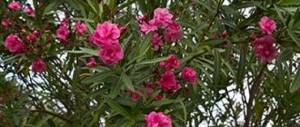Buttercup flowers or ranunculus are plants that belong to the genus of herbaceous crops. People often call them “night blindness” or toadworm. The bushes are distinguished by their caustic juice, which makes all parts of the flower poisonous. The main habitat for these wonderful plants is marshy areas or ponds. What buttercups look like and their main types can be seen in the photo in this article.
Acrid buttercup description
Buttercup is a herbaceous perennial plant. Belongs to the Buttercup family. It is a straight, branched stem 30-80 cm high.
It has glossy flowers with five yellow petals, which are 10-20 mm in diameter.
Buttercup fruits are spherical multi-nuts, 2.5-3 mm in length.
You can also hear about this plant under other names - gout grass, butter flower, stinging grass, night blindness. It blooms from May to August.
Acrid buttercup grows throughout the European part of Russia, Western Siberia, and the Caucasus. Common places where it can be found are forested meadows, sparse forests, fields, near river banks, and swampy areas.
buttercup photo
Buttercup has long been known for its effective healing capabilities. The medicinal product is the above-ground part of the plant - the grass that is collected during its flowering season.
After collection, it is dried in the fresh air or in a ventilated area. The plant is poisonous when fresh, but after the drying process, caustic buttercup is safe.
Before considering the pharmacological properties of this plant, it is worth carefully familiarizing yourself with its biochemical composition.
Treatment
If intoxication with buttercups occurs, the following measures need to be taken:
- The stomach should be rinsed with water in which activated carbon must first be diluted;
- The poisoned person should take enveloping agents - milk, egg white;
- Allow absorbents to be used.
Depending on the patient’s condition, it may be necessary to use painkillers and medicinal restoration of heart rhythm. The doctor may also inject antitoxic drugs into the patient. If kidney function is impaired, then appropriate therapy is carried out.
Buttercup is a poisonous plant
It should be noted that the toxicity of caustic buttercup is caused by a substance - protoanemonin. It is this essential substance that causes the unpleasant pungent odor and burning taste.
It is not for nothing that this plant is called night blindness and caustic buttercup; if you inhale the vapors of a caustic substance, the result will immediately appear in the form of lacrimation, choking, throat spasms, severe irritation of the respiratory tract, eyes, runny nose and short-term loss of vision.
The beneficial properties of this plant are clearly expressed. But you should be careful in dosage and use due to its toxicity.
Symptoms of poisoning
The signs of poisoning by this plant - buttercup, regardless of its type, will be absolutely the same. Because all types contain the same active component. If buttercup juice gets on the skin, the following symptoms occur:
Fly agaric poisoning
- Itching occurs;
- The skin becomes red;
- Sometimes boils may appear;
- Hives;
- Swelling.
If buttercup juice gets on the mucous membranes of the nose and eyes, as well as if poison vapors get inside, the following symptoms may occur:
- lacrimation;
- Coughing;
- Runny nose.
If the eyes have been strongly influenced by poisons, this can cause loss of vision for some time. It is for this reason that people often call this plant “night blindness”.
If toxic components enter the digestive tract, the following symptoms occur:
- A person begins to secrete saliva in increased quantities;
- A poisoned person may feel very sick or vomit, and the vomiting may be uncontrollable;
- The stomach begins to ache;
- Diarrhea develops;
- The pulse changes.
If a large amount of poison enters the human body, symptoms of central nervous system damage may occur:
- Convulsive syndrome occurs;
- The muscles begin to tremble;
- Consciousness is disturbed.
Buttercup - beneficial properties
1. In small doses, it stimulates the central nervous system;
2. Increases hemoglobin levels and the number of red blood cells;
3. The product is antimicrobial (staphylococcus, E. coli, white mold);
4. Has an analgesic, tonic and wound healing effect;
5. Positive results were revealed for skin tuberculosis;
6. Acrid buttercup is used for headaches, stomach and neuralgic pains;
7. For the treatment of wounds, burns, furunculosis and hernia;
8. For gastrointestinal diseases;
9. Pulmonary tuberculosis;
10. A fresh plant is used to treat gout and neuralgia. When rubbing the herb, a burning effect is caused, like mustard plaster;
11. Fresh leaves, crushed, can also be used to reduce warts.
The strong effect of the plant helped it become widely used only in folk medical practice; it is not considered officially recognized. It can be purchased at the pharmacy in the herbal department.
However, the herb is considered a good remedy for treating animals, so veterinary medicine also uses caustic buttercup, but externally, for certain skin diseases. Ointments and preparations are prepared on its basis.
In folk practice, juice is squeezed out for treatment, decoctions are prepared, and many different recipes and dosages are used. Many healing properties of buttercup have been used in past centuries.
First aid
The victim must remove the poisonous plant from the body as quickly as possible. This is done by reflexively inducing vomiting: pressing on the root of the tongue.
A solution of potassium permanganate or baking soda (take it on the tip of a knife, dissolve it in a glass of warm water) can also provoke vomiting. Next, dissolve crushed activated carbon (1 tablet per 10 kilograms of weight) in a liter of warm water and also give it to drink.
To protect against damage to the esophagus, stomach, and intestines by caustic components, you can give chemical gastroprotective agents (Almagel, Smecta) or natural ones: plain milk, egg whites, jelly, oat decoctions, sesame oil.
If a person has not swallowed poisonous plants, but has taken them with his hands and chewed them in his mouth, then he should thoroughly rinse the skin and mucous membranes of the mouth with cool water. If available, it is advisable to lubricate with anti-burn sprays (Panthenol, Olazol). It is advisable to suck on the ice, but if there is none, then simply rinse your mouth with cold water for 10 minutes.
If the juice of a poisonous plant gets into your eyes, wash them thoroughly with plain water and milk. You can drip antibacterial drops: Levomycetin, Sulfacyl sodium and others.
For allergy symptoms (redness of the skin of the body and face, swelling of the neck, itching, feeling of lack of air), take antihistamines (Loratadine, Suprastin).
If symptoms are observed in an animal, it should be taken to a veterinarian immediately.
For pain in the prehospital stage, painkillers should not be used. You can put cold on the place of unpleasant sensations: stomach, head, etc.
In a specialized hospital, the patient is prescribed symptomatic therapy, because poisonous buttercup does not have a specific antidote.
- Gastric lavage using a nasogastric tube.
- Restoring normal water-salt balance by administering solutions of sodium chloride, rheopolyglucin, glucose, acesol intravenously.
- Treatment of manifestations of the effects of a poisonous plant: restoration of heart rhythm (antiarrhythmic drugs), increased blood pressure (caffeine, adrenaline), plasmapheresis, dialysis (for renal failure), hepatoprotective agents (for liver failure).
- The use of antitoxic agents: Unithiol, Thiosulfite and sodium hyposulfite.
- For toxic shock, allergies: glucocorticosteroids, diuretics.
- If seizures occur, use anticonvulsants (Phenazepam, Relanium, Diazepam, Carbamazepine).
- If the victim is delivered in serious or extremely serious condition, he is placed in the intensive care unit and connected to a ventilator.
- Vitamin therapy.
Traditional recipes, use in folk medicine
A weak solution of the plant's juice is used in folk medicine to wash the eyes for barley and to disinfect purulent wounds, as well as for wiping the body in case of scabies mites.
Popularly, to relieve inflammation and open the abscess of abscesses and boils, fresh crushed plant herbs are applied to this place.
It is recommended to soak feet in a hot infusion of buttercup at night for rheumatism. Since ancient times, fresh concentrated buttercup juice (in particular, ranunculus acris) has been used to remove warts.
In folk medicine, a decoction of caustic buttercup in small doses was used for diseases of the liver, stomach (especially gastric upset), headaches and neuralgic pain, rheumatism, for the treatment of wounds, burns, abscesses, tuberculosis (especially skin), rabies, malaria, etc.
In addition, buttercup has proven itself in folk medicine for the treatment of long-term non-healing wounds, pustular skin lesions, hernias, burns, and cuts of various etiologies.
An ointment made from ranunculus flowers with animal fat is rubbed on sore joints and affected areas of the skin. Ranunculus flowers are used quite widely in Tibetan medicine as a warming agent that dissolves tumors, as well as draws out serous fluids and effectively heals rotting ulcers and wounds.
In folk medicine, various preparations from buttercup root (in particular, ranunculus acridum) are often used for medicinal purposes. For example, powder from the root of the plant is used to treat and remove warts; vaginal suppositories are prepared from it and are used for infertility.
In addition, ranunculus seeds are used as an antipyretic and tonic for colds.
The bactericidal, wound-healing and analgesic effect of buttercup (especially creeping buttercup - lat. Ranunculus repens) has also long been used in folk medicine to treat gout, rheumatism, radiculitis and arthritis.
The plant is very effective for skin diseases. For example, the pulp from the leaves is popularly used to successfully treat fungal diseases, scabies, and also remove warts.
Powdered leaves and flowers of buttercup (especially creeping buttercup) were used in the old days instead of mustard plasters, and were also applied to abscesses and boils to speed up ripening.
Infusion of buttercup herb
Brew half a tablespoon of dried raw materials in a thermos (half a liter of boiling water). Leave for half an hour.
How to apply
Gargle the inflamed mucous membrane of the throat with the infusion several times a day.
Ranunculus flower ointment
Mix buttercup flowers with interior fat in a ratio of 1/1.
Mode of application. For viral diseases, colds, inflammation of the lymph nodes, rub the ointment on the chest and throat, wrap yourself in a woolen scarf. The course of treatment is carried out daily before bedtime.
An ancient recipe for fresh buttercup leaves to treat rheumatic pain, arthritis, warts and various harmless skin growths.
Lubricate the previously affected skin with vegetable oil or Vaseline, then apply a fresh buttercup leaf and leave for 5-10 minutes. You can’t pick up a buttercup with your bare hands, the plant is poisonous!
Literature
- Alekseev Yu. E. et al.
Herbaceous plants of the USSR / Responsible. ed. doc. biol. Sciences T. A. Rabotnov. - M.: Mysl, 1971. - T. 1. - P. 396. - (Reference books for geographers and travelers). - Gubanov I.A. et al.
613.
Ranunculus sceleratus
L. - Poisonous buttercup // Illustrated guide to plants of Central Russia. In 3 volumes - M.: Scientific T. ed. KMK, Institute of Technology. research, 2003. - T. 2. Angiosperms (dicots: dioecytes). - P. 228. - ISBN 9-87317-128-9.
Notes
- For the convention of indicating the class of dicotyledons as a superior taxon for the group of plants described in this article, see the section “APG Systems” of the article “Dicotyledons”.
- [www.theplantlist.org/tpl/record/kew-2524461 Ranunculus acris
The Plant List
database . (English) (Retrieved May 31, 2012) - Ecoflora of Ukraine = Ecoflora of Ukraine (Ukrainian) / Vidpov. editor Ya. P. Didukh. - K.: Phytosociocenter, 2004. - T. 2. - 480 p..
- Pronichkina A. A., Lebedev A. N.
[www.pdaa.edu.ua/sites/default/files/conference/2014/med_herbs/15_Pronichkina.pdf Weed medicinal plants of the Central zone of the European part of Russia]. // Medicine in Russia: from the past to new technologies: materials of the third International Scientific and Practical Internet Conference. — Poltava, May 15-16, 2014 - Poltava, 2014. - P. 63. - Holger Perner.
[flo.com.ua/forum/viewtopic.php?f=94&t=13174 Slippers of the genus
Cypripedium
in China (
Bifolia
and
Flabellinervia
)]. orchids.ua (2009). Retrieved March 21, 2013. [www.webcitation.org/6FHyUxpQg Archived from the original on March 21, 2013].
Other information
On the banks of the Berezovka River, a tributary of the Kolyma, a woolly mammoth was found in the permafrost. In 1901, the German zoologist Eugen W. Fitzenmayer and his colleague Otto F. Herz, who took part in the excavations and reconstruction of the “Berezovsky Mammoth,” found that the beast had a bunch of plants in its mouth, which the mammoth began to chew, right before falling into a deep crevice. and die. The preserved plant remains were identified as Carex
sp.,
Thymus serpyllum
,
Gentiana
sp.,
Cypripedium
sp.,
Papaver alpinum
and buttercup[6].











